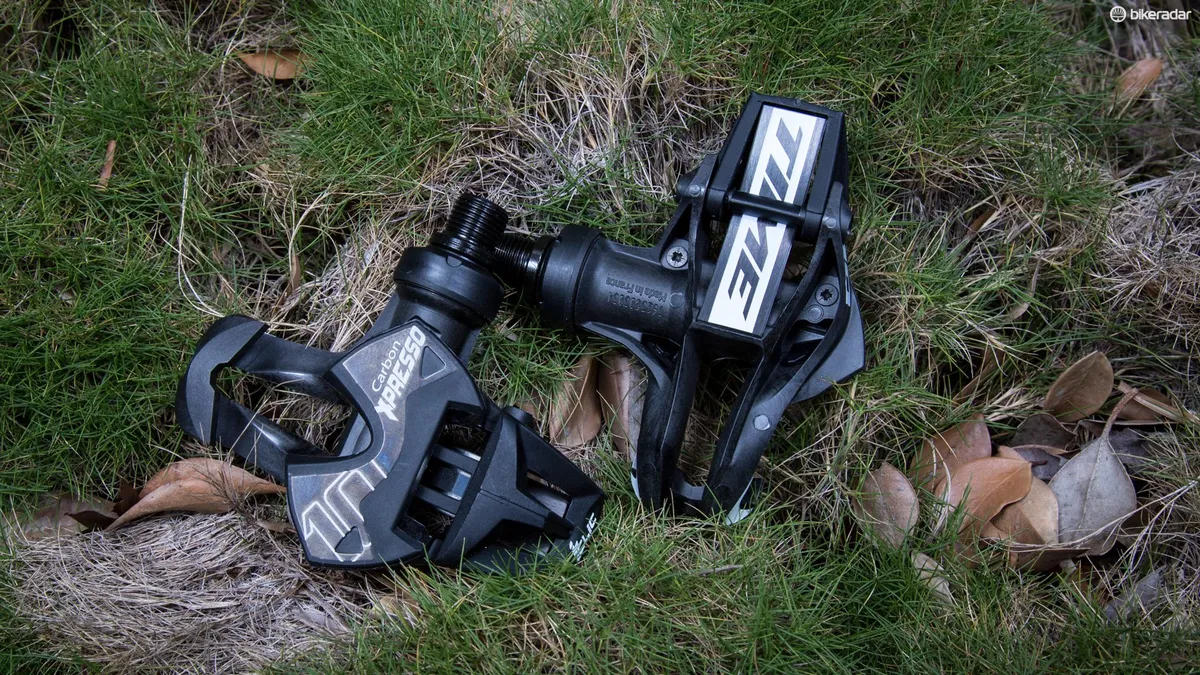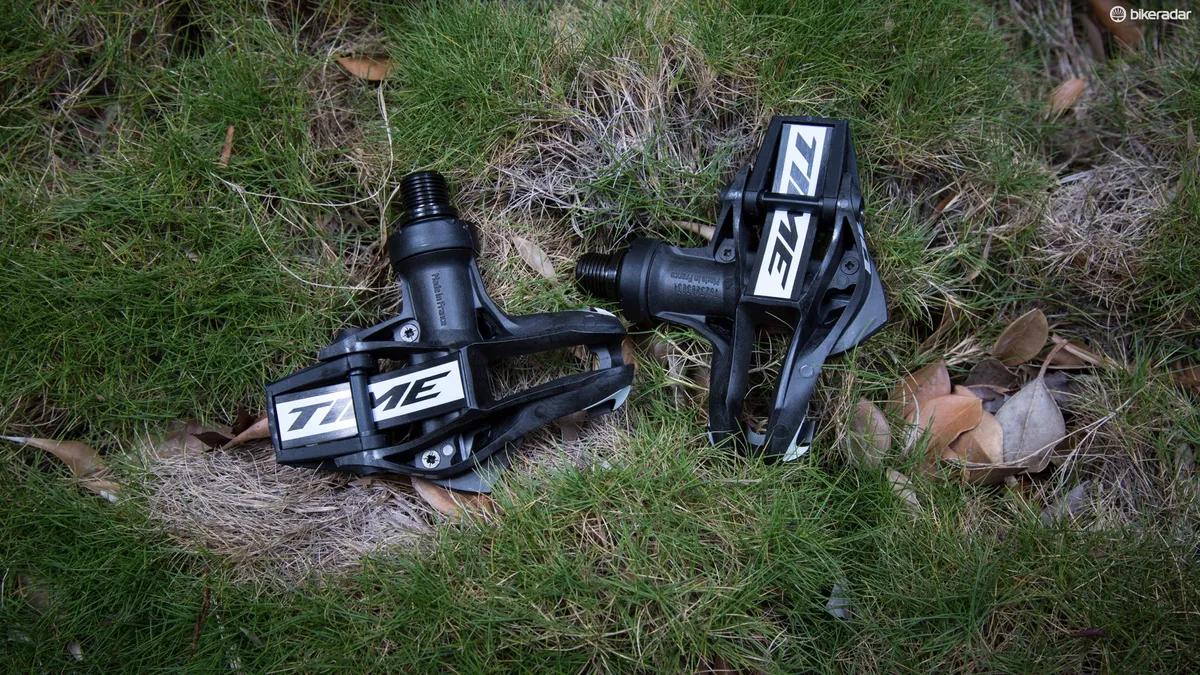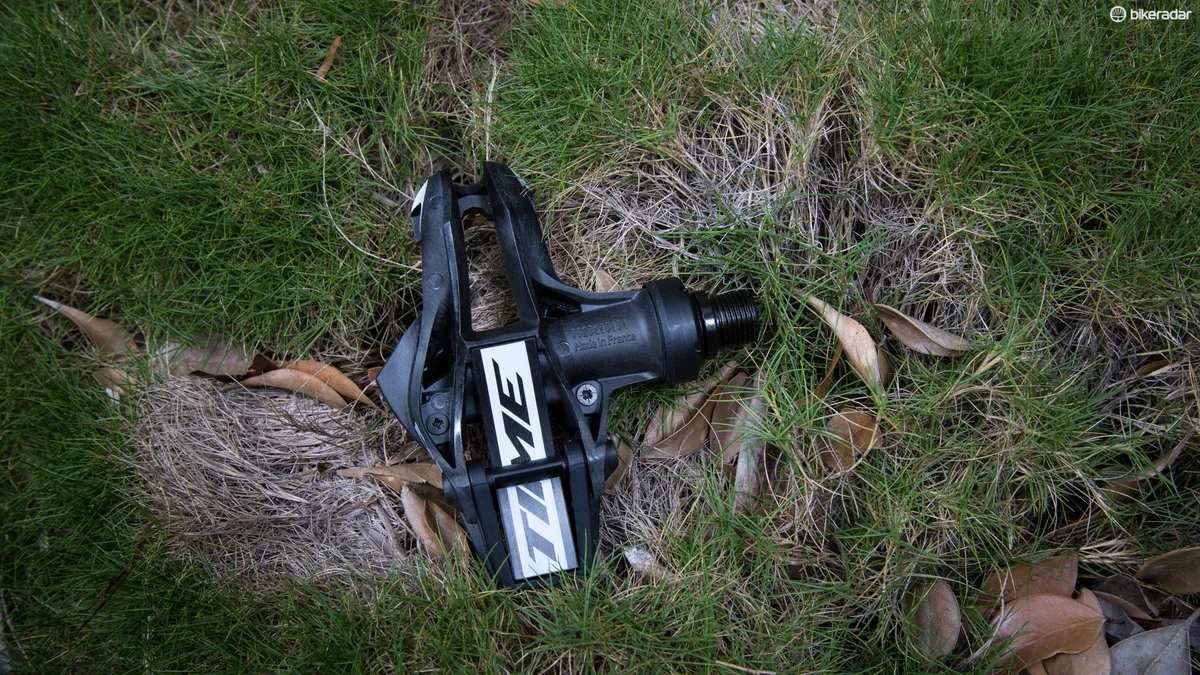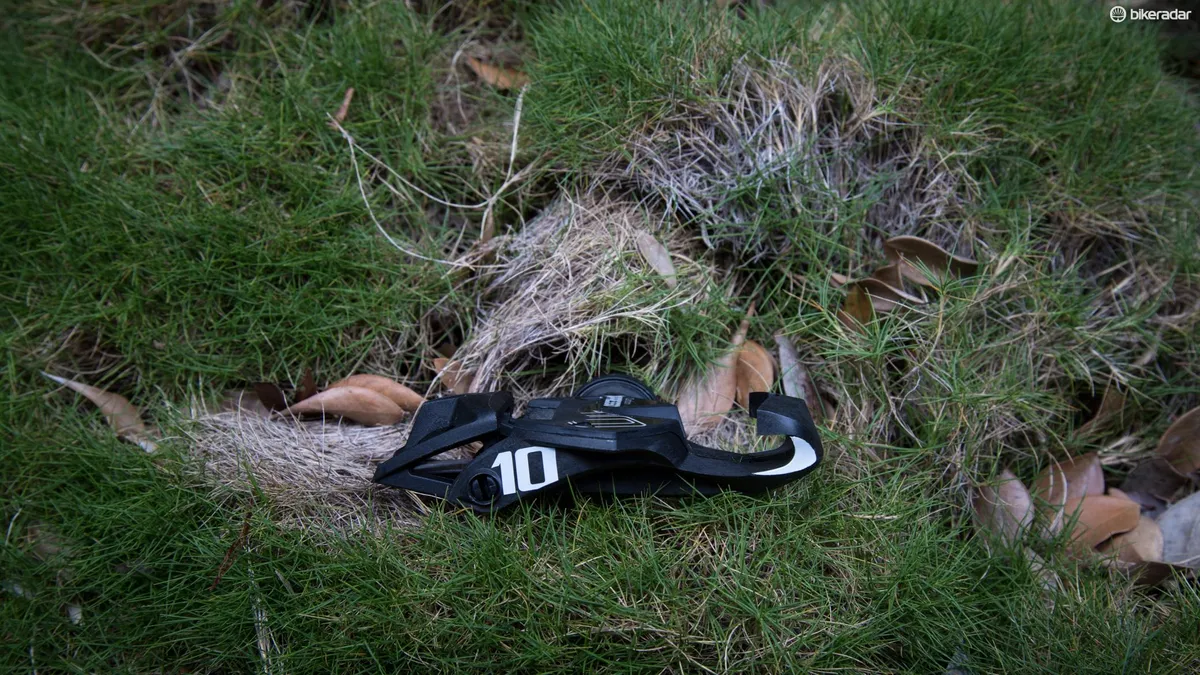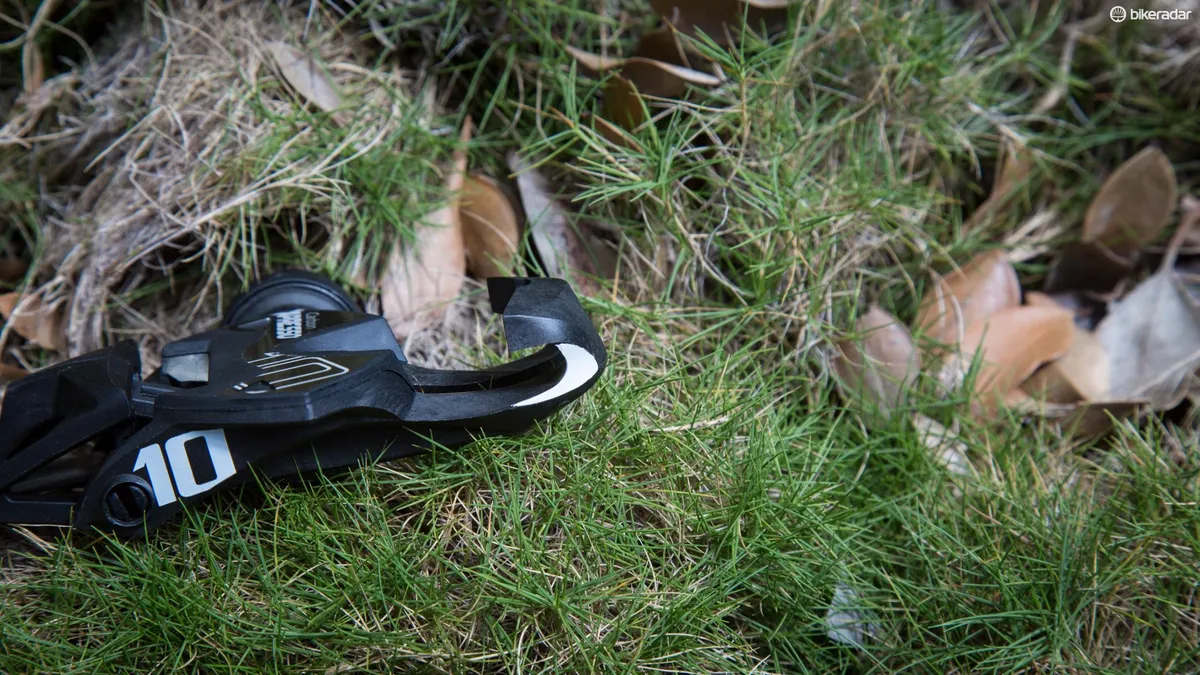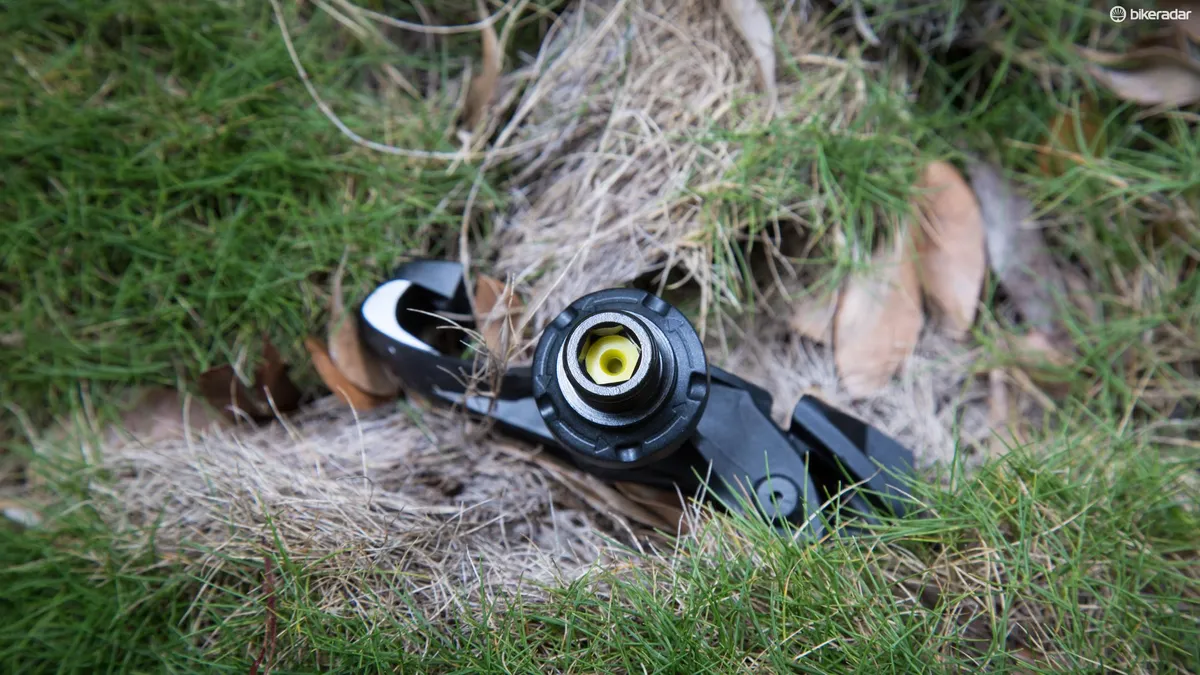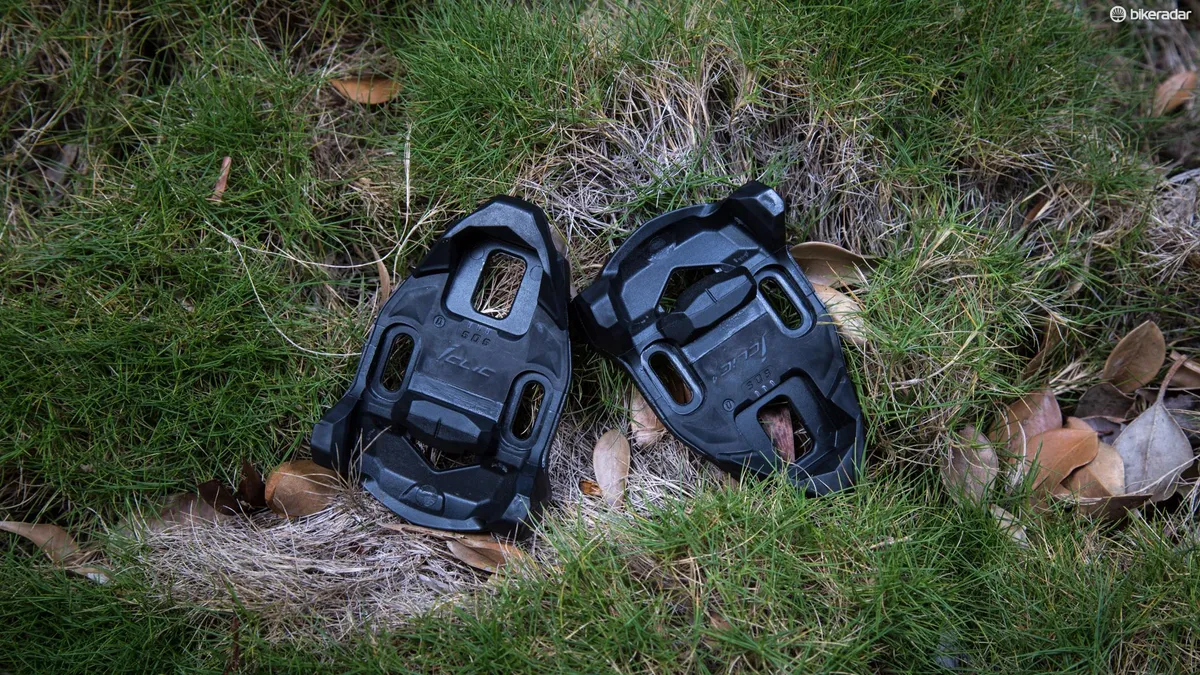French brand Time has been in the pedal game for some time now, and although it may not get the recognition Shimano, Look and Speedplay do, its pedals are actually pretty clever.
The Xpresso 10’s sit more or less in the middle of the brand's range and offer a hollow-steel axle and a carbon body, and weigh just 97g per side — Speedplay's Zero with a stainless axle weighs 103g and Shimano's Ultegra SPD-SL 6800 road pedals weigh 129g each.
Time was one of the first brands to introduce knee friendly float into its pedals and the Xpressos offer +/- 5 degrees of angular float and 2.5mm of lateral movement.
Knee alignment issues have always been an issue for me and I have been a long time Speedplay user because of the adjustability of the cleats and the float. The multidirectional movement provided by the Xpresso pedals jived well with my sensitive joints.
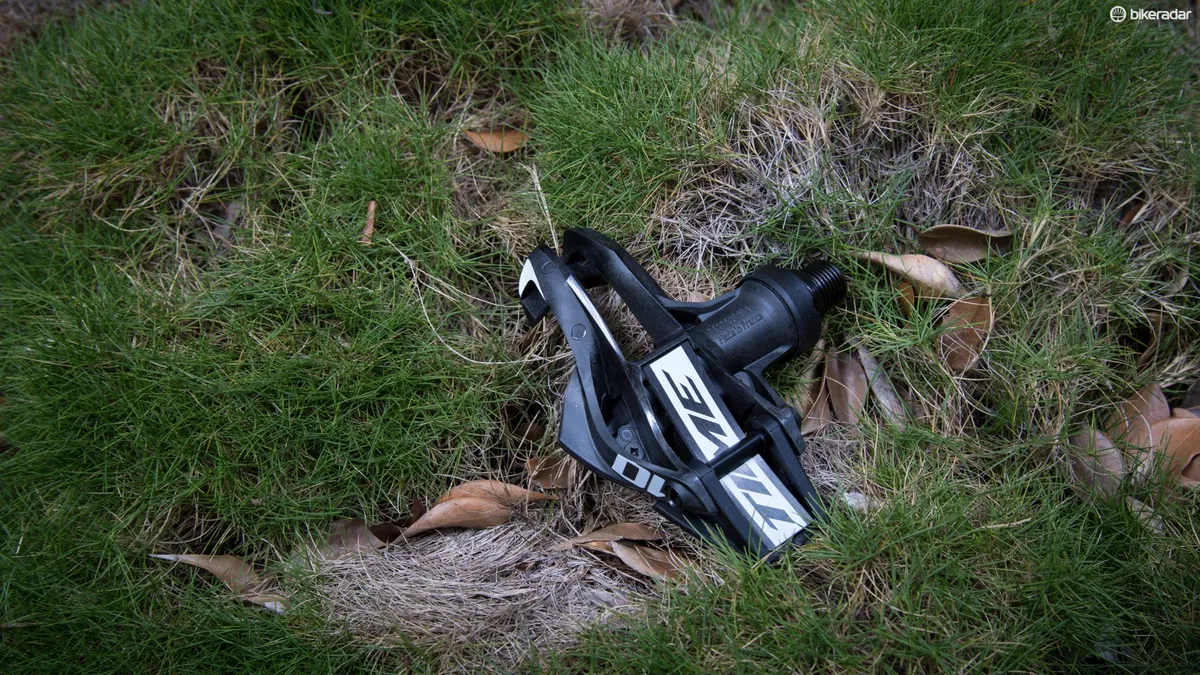
Time's float is notably different to Speedplay's. When you don’t adjust the heel alignment screws on the Zero's cleats, as you pedal, it feels like your heel can swing back and forth wildly and completely friction free.
The Xpressos, on the other hand, see a bit of friction which makes for more controlled movement and allows your foot to settle into a comfortable position on the pedal. This can also be adjusted with a little screw on the pedal body, which changes the tension on the carbon leaf spring, but I didn’t feel the need to do so.
Carried over from the previous iteration of Time’s pedals is the iClic retention system. Unlike the majority of road pedals out there, where you have to overcome spring tension to clip in, the iClic mechanism uses a carbon leaf spring to hold the rear clasp open.
Similar to a ski binding, when you press down on the mechanism it grabs the cleat with a small pop rather than the loud clunk most are used to.
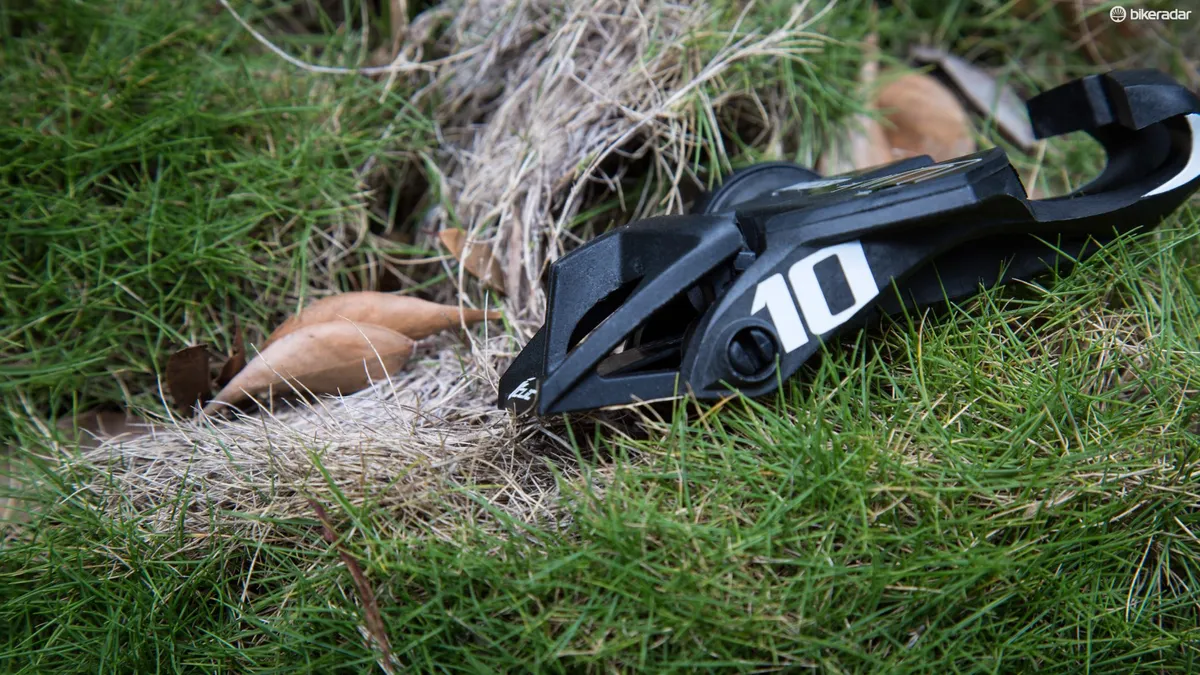
The motion itself is extremely smooth and it genuinely feels as though you only need to touch the pedal with the cleat, and you’re in. The downside to not having a big, heavy spring engagement spring is that there is nothing to weight the rear end of the pedal down, and there were quite a few times I had to paw the pedal to get it into the right position.
Once clicked in, the Xpressos offer a secure hold even when climbing and sprinting, and the 15-degree release angle makes accidental release a non-issue. With a 70mm2 platform there is no rocking or instability on the pedal, and with such a large surface area hot spots are also a non-issue. With a 13.5mm stack height they are almost identical to Shimano's 13.7mm and a bit higher than Speedplay's 11.5m (three-hole mount).
When setting up the cleats, there is a 'Q' on either cleat that denotes a possible 2.5mm Q-factor adjustment based on which shoe each cleat is mounted to. The cleats themselves are an all-plastic affair and do get chewed up pretty fast.
However, even though the three ground contact points look like they've gone through a paper shredder after a few months' use, the nub pedal still actually grabs just fine.
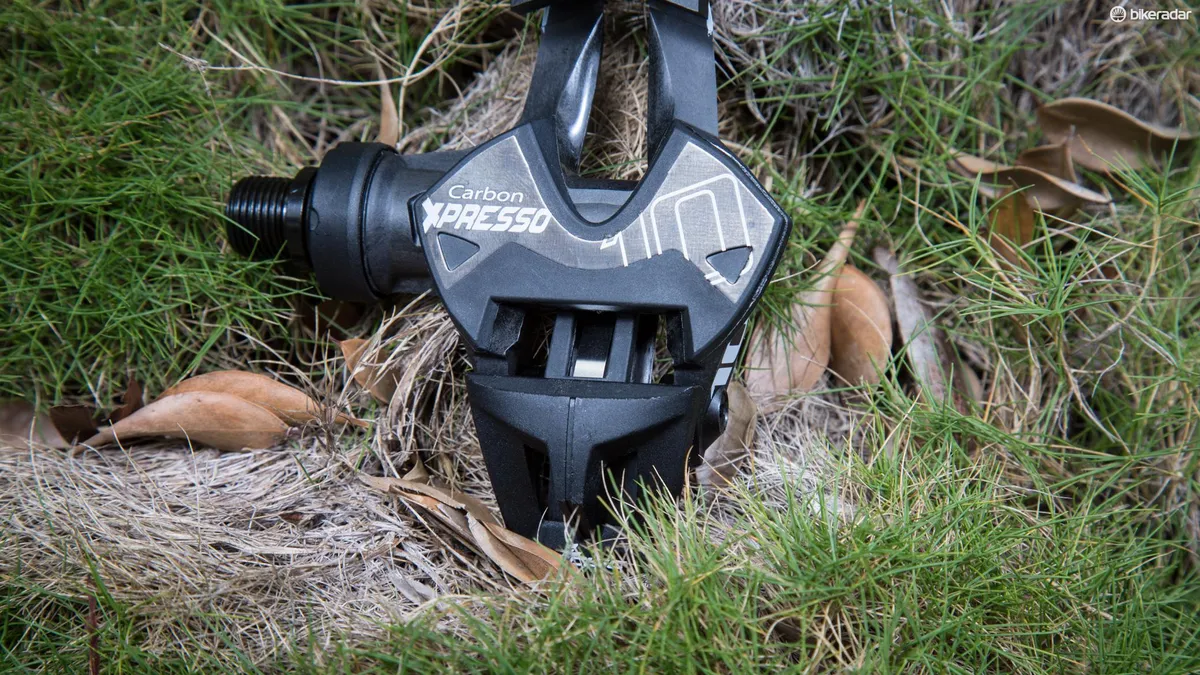
Time’s Xpresso pedals sure do look cool, with styling more like a spaceship than a pedal, but the downside of this is there are plenty of sharp edges to punish you for a missed clip in.
Whether you’re a weight weenie, someone with knee problems or even a new rider intimidated by clipless pedals, Time’s Xpressos are worth a look.
While the 10s are likely to provide a bit too much price-tag shock for the first-time rider, as you go down in the range there is no lost functionality with the more expensive pedals only offering lighter weights, exotic materials and ceramic bearings.
Overall, the Xpresso pedals are every bit as good as what’s on offer from Shimano, Look and Speedplay, and the only thing I can knock them for is how quickly the cleats wear.
